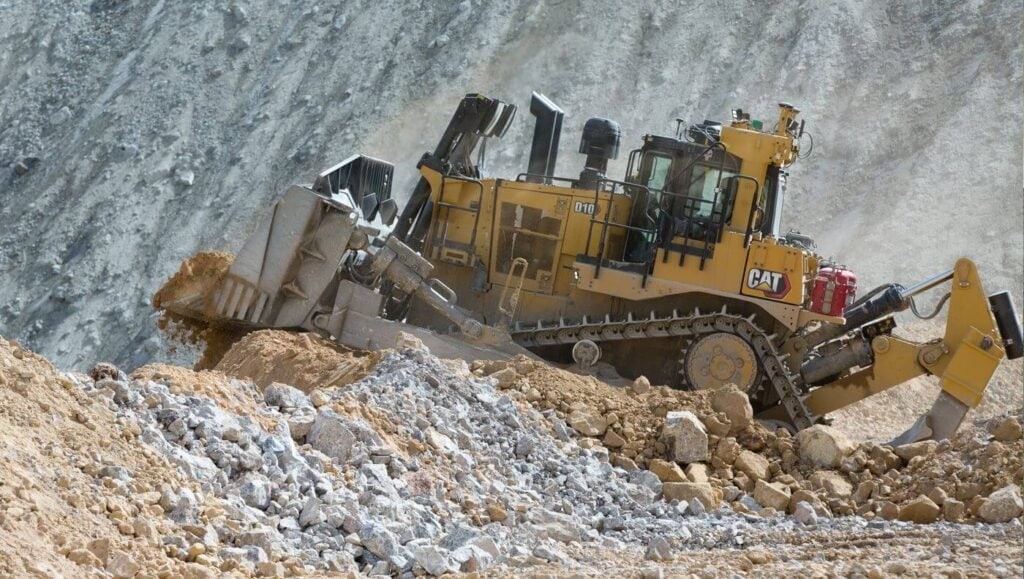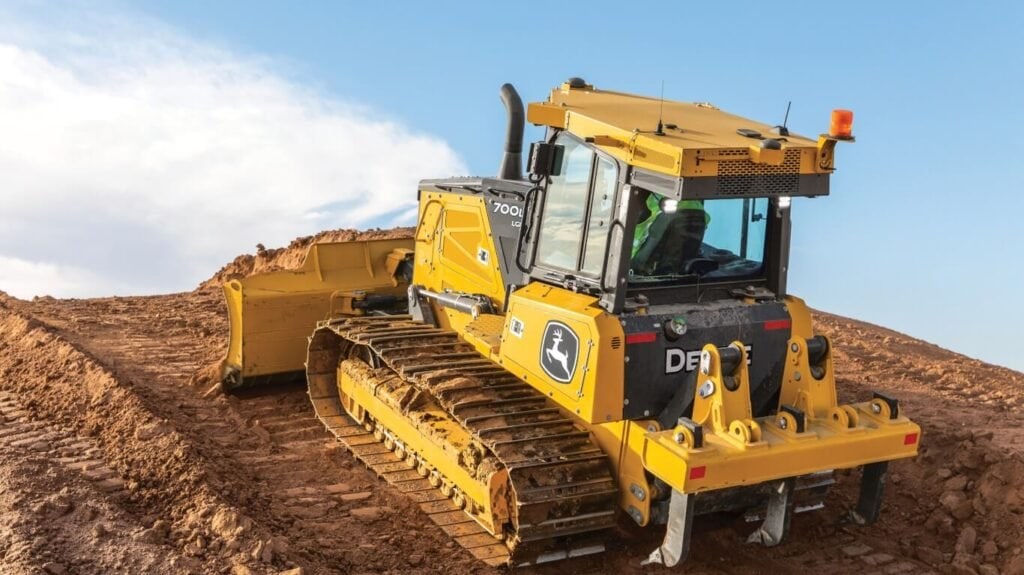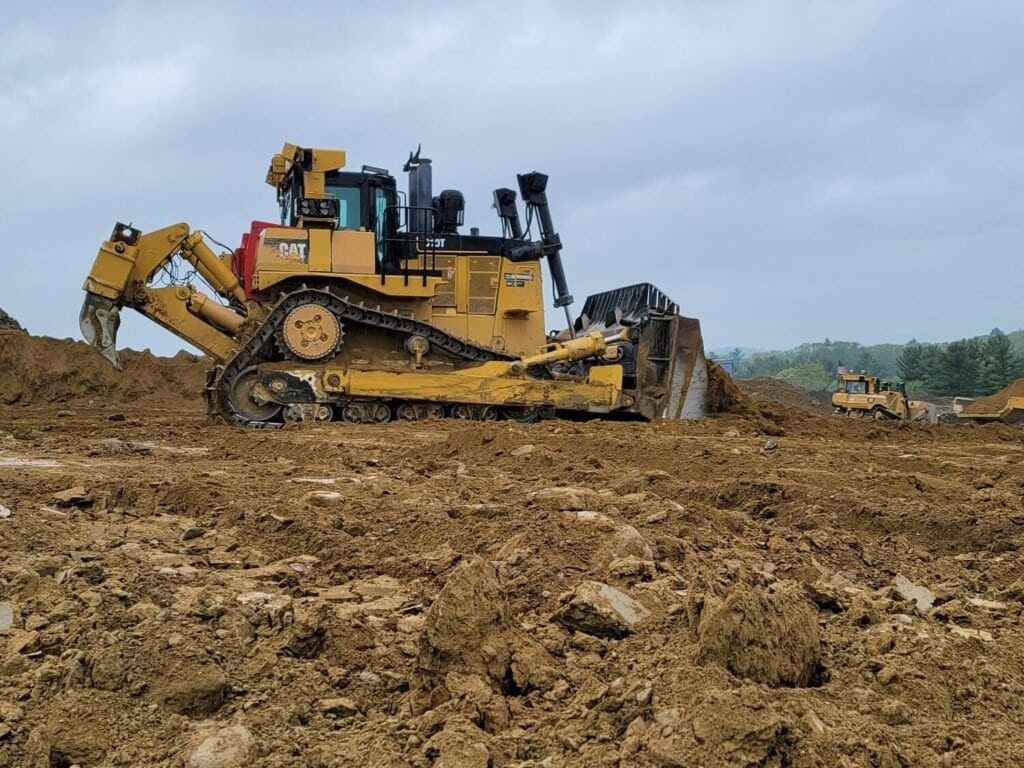In your construction, mining, or earthmoving projects, choosing the right bulldozer is critical for efficiency. However, one key factor that often gets overlooked is how the bulldozer weight can affect its performance on the job site. Using the wrong weight class could lead to issues you might not anticipate, such as poor fuel efficiency or safety risks.
Selecting a bulldozer that’s too heavy or too light for your specific task can result in several problems: inefficient fuel use, lack of traction, and even increased costs for maintenance or transport. It can also lead to unstable working conditions, putting your team’s safety at risk. With so many models and weight classes to choose from, how do you know which one is right for your needs?
By understanding how bulldozer weight impacts performance, you can make the right decision for your project. In this article, we’ll walk you through the different weight classes of bulldozers, the pros and cons of each, and how to choose the right one for the tasks at hand. By the end, you’ll be equipped with the knowledge to select the perfect bulldozer that ensures maximum efficiency, safety, and cost-effectiveness for your operation.

1. The Impact of Bulldozer Weight on Performance
Bulldozer weight plays a direct role in its performance and ability to perform various tasks efficiently. Here’s how:
Tractive Force: Heavier bulldozers provide more tractive force, which is essential when the machine needs to push through thick materials like hard soil, rocks, or frozen ground. The greater the weight, the more force the bulldozer can generate at its tracks, allowing it to perform tasks that require significant pushing power.
Stability: A heavier bulldozer offers increased stability, especially when performing heavy lifting, pushing, or scraping. This stability is crucial when working on uneven terrain or when working with steep slopes, reducing the risk of tipping or loss of control during operations.
Maneuverability: While a heavier bulldozer provides more stability and tractive force, it can also reduce maneuverability. Heavier machines are slower to respond to steering inputs and are harder to move in tight spaces. In contrast, lighter bulldozers are quicker and more agile, allowing them to navigate confined areas with more precision.
كفاءة الوقود: ال weight of the bulldozer can also affect its fuel efficiency. Heavier machines may require more fuel to maintain performance, especially when working on less demanding tasks. Lighter bulldozers may be more fuel-efficient on smaller projects but may struggle with heavy-duty tasks.

2. What Are the Different Weight Classes of Bulldozers and Their Uses?
Bulldozers are categorized into various weight classes, each designed for specific types of tasks. These weight classes are typically measured in terms of operating weight, which includes the machine itself, along with all fluids, attachments, and other essential components. Here’s an overview of the main bulldozer weight classes and the types of jobs they excel at:
Small Bulldozers (Under 10 Tons): These compact machines are typically used for lighter, more delicate tasks such as landscaping, small construction projects, and grading. They offer excellent maneuverability and are ideal for jobs where space is limited or where precision is crucial. Common uses include trenching, small land clearing, and backfilling.
Medium Bulldozers (10–20 Tons): Medium-sized bulldozers are more versatile, capable of handling moderate earthmoving and grading tasks. These are ideal for commercial construction, roadwork, and medium-scale earthmoving. They offer a balance of power, stability, and maneuverability, making them suitable for most medium-weight tasks.
Large Bulldozers (20–50 Tons): Large bulldozers are used for heavy construction projects, mining operations, and large-scale site preparation. They provide increased tractive force, stability, and the ability to push large amounts of material. Common tasks include road construction, earthmoving on large sites, and working in mining or quarry operations.
Super Large Bulldozers (50 Tons and Above): Super large bulldozers are designed for the most extreme tasks, such as mining, heavy-duty earthmoving, and handling massive material volumes. These bulldozers are capable of working in the most rugged and challenging conditions, such as quarry sites, heavy mining operations, and major earthworks for large infrastructure projects. These machines often feature specialized attachments and technology to optimize performance and efficiency in such demanding environments.

3. How Much Does a Bulldozer Weigh and What Factors Influence Its Weight?
The weight of a bulldozer is a significant factor when considering its performance, maneuverability, and the tasks it can handle. While the weight varies based on the model, size, and features, here are some key considerations when looking at how much a bulldozer weighs:
Bulldozer Size: The most straightforward factor influencing a bulldozer’s weight is its size. Smaller bulldozers may weigh as little as 4 to 8 tons, while larger models can weigh up to 100 tons or more. The size typically correlates with the tasks the bulldozer is designed to handle—smaller models are for lighter tasks, while heavier models are suited for larger earthmoving operations.
Track Width and Design: The width and design of the bulldozer’s tracks can also influence its overall weight. Wider tracks distribute the machine’s weight more evenly across the surface, preventing the machine from sinking into soft ground or becoming stuck. Bulldozers with wider tracks tend to weigh more but offer better flotation and stability, especially on muddy or sandy terrain.
Attachments and Accessories: The weight of the bulldozer can increase depending on the attachments it uses. For example, a bulldozer fitted with a ripper, blade, or winch will weigh more than a basic model without these attachments. Additionally, specialized blades, like those used for scraping or grading, may also add extra weight to the machine.
Construction Materials: The materials used in constructing the bulldozer can impact its weight. Some models use lighter materials, such as aluminum alloys or advanced composites, to reduce the overall weight without sacrificing strength. On the other hand, bulldozers designed for extremely heavy-duty tasks are often made with reinforced steel or other heavy-duty materials to withstand harsh environments.
Engine and Powertrain: A larger, more powerful engine requires additional structural components and materials to support it, contributing to the bulldozer’s overall weight. Heavy-duty engines that generate high horsepower are often paired with more robust frames and undercarriages to manage the power, which increases the weight of the machine.

4. Factors to Consider When Choosing a Bulldozer Weight Class
Selecting the right bulldozer weight class is not solely based on the task at hand. Several factors influence the decision on which weight category to choose. These factors are crucial in ensuring that the bulldozer performs efficiently and meets the specific demands of the construction or earthmoving project. Here are some of the primary considerations:
Type of Terrain: The condition of the terrain you’ll be working on plays a significant role in determining the right bulldozer weight class. For example, if the site is muddy or soft, a heavier bulldozer with wider tracks can provide better flotation and prevent the machine from sinking. In contrast, if you’re working on a solid, stable surface, a medium-weight bulldozer may suffice, offering better speed and maneuverability.
Project Scale and Scope: Large-scale projects such as road construction, mining, or large infrastructure development require bulldozers with more substantial power and weight. Heavy-duty bulldozers, often in the 30-50 tons range, are equipped to handle massive material volumes. For smaller construction tasks, landscaping, or residential development, a medium or light bulldozer (under 15 tons) would be more efficient and cost-effective.
Machine Longevity: A heavier bulldozer is generally built to last longer, especially when working in harsh environments or heavy-duty tasks. If the project requires prolonged use in extreme conditions, a robust, heavier bulldozer may provide superior longevity and reduced wear and tear. On the other hand, for less demanding applications, opting for a lighter bulldozer can extend the life of the equipment by reducing unnecessary stress on the machine.
كفاءة الوقود: The weight of the bulldozer affects its fuel consumption, with heavier machines often requiring more fuel for operation. When choosing the appropriate weight class, it’s essential to assess the balance between performance requirements and operational costs, including fuel. A lighter bulldozer may be more fuel-efficient for a smaller-scale job, but for larger projects, the heavy-duty power provided by a larger machine may offset the additional fuel costs.

5. How to Optimize Bulldozer Performance Based on Weight
To maximize the efficiency and productivity of your bulldozer, it’s important to optimize its performance based on its weight. Here are several strategies to get the most out of your bulldozer:
Properly Maintain the Undercarriage: The undercarriage is one of the most crucial components in determining the bulldozer’s performance. Regular maintenance, such as inspecting the tracks, rollers, and sprockets, ensures that the weight is evenly distributed, preventing excessive wear or damage. Proper maintenance reduces operational downtime, improving overall performance and extending the bulldozer’s lifespan.
Utilize the Right Attachments: Selecting the appropriate attachment based on the weight class of the bulldozer can enhance its performance. For example, a heavy-duty bulldozer may benefit from a larger, more robust blade or ripper for heavy pushing tasks. Lighter bulldozers, on the other hand, can benefit from smaller, more precise attachments for grading or landscaping tasks, which optimize their maneuverability and efficiency.
Adjust Operating Speeds: For heavier bulldozers, operating at lower speeds is often more effective when pushing large volumes of material, as the tractive force generated at lower speeds helps to maximize efficiency. However, for lighter bulldozers, higher operating speeds may be possible while maintaining optimal efficiency, particularly when moving material over smoother terrain.
Choose the Right Machine for the Job: While weight is important, ensuring the bulldozer is suited for the specific task is just as critical. For tasks that require fine grading or material handling in tight spaces, a lighter bulldozer with greater agility will be more effective. For larger earthmoving tasks, a heavy-duty bulldozer will provide better results with more force and stability.
Monitor Weight Distribution: Proper weight distribution plays a pivotal role in bulldozer performance. Uneven weight distribution can lead to instability or inefficient operation. Ensuring that the machine is balanced and that the load is evenly distributed across the blade or bucket helps optimize performance, especially when working on slopes or uneven ground.

6. The Role of Bulldozer Weight in Safety and Stability
The weight of a bulldozer plays an essential role in its stability, particularly in challenging working environments. Safety is a critical concern on construction sites, and a bulldozer’s weight influences its ability to maintain stability during operation. Here’s how weight impacts safety and stability:
Lower Center of Gravity: Heavier bulldozers often have a lower center of gravity, which significantly enhances their stability. A low center of gravity helps prevent the machine from tipping over, especially when working on slopes or uneven terrain. The added weight helps the bulldozer maintain balance when pushing heavy materials or making sharp turns.
Better Traction: The weight of the bulldozer also contributes to better traction, especially in slippery conditions. A heavier bulldozer can exert more downward force on the ground, improving its grip on soft, muddy, or loose surfaces. This makes it less likely to get stuck or lose control during operation, reducing the risk of accidents.
Increased Stability on Inclines: When working on inclines or hills, a heavier bulldozer is less likely to slide or lose traction compared to lighter machines. The additional weight helps the machine stay grounded, making it safer to work in challenging conditions.
Minimizing Risk of Rollover: Bulldozers with the right weight distribution are less likely to experience a rollover, which is one of the most dangerous risks on construction sites. Ensuring the machine is balanced with an optimal weight distribution is crucial for avoiding such accidents, particularly on unstable ground or steep slopes.

7. Impact of Bulldozer Weight on Operational Costs
While the weight of a bulldozer contributes significantly to its performance, it also has a direct impact on operational costs. Here’s how weight can affect the total cost of operating the machine:
Fuel Consumption: Heavier bulldozers require more power to operate, which translates into higher fuel consumption. While the extra power and weight may be necessary for some projects, it’s important to consider fuel costs over the long term. For lighter tasks, opting for a lighter bulldozer can result in significant fuel savings.
Transport Costs: Transporting a bulldozer from one site to another can be costly, especially if the machine is on the heavier side. The larger the bulldozer, the more expensive it becomes to transport, requiring special equipment such as heavy-duty trailers. If the machine isn’t being used for long periods or is being moved frequently, these costs can add up quickly.
Maintenance and Wear: Heavier bulldozers are typically subject to more wear and tear due to the greater forces involved in pushing or grading material. This increased strain can lead to higher maintenance costs over time. Lighter bulldozers tend to have less strain on their components, potentially resulting in lower long-term maintenance costs. However, the nature of the job and the machine’s use will ultimately determine how significant these costs are.
Operator Training: Heavier bulldozers often require more experienced operators to handle the machine effectively. Operating a large bulldozer with precision requires skill and training, which may increase labor costs. On the other hand, lighter bulldozers can be easier for less experienced operators to control, potentially lowering training expenses.

8. Technological Advancements and Bulldozer Weight
Recent technological advancements have made it possible to enhance bulldozer performance without drastically increasing weight. Manufacturers have developed new materials and innovations that reduce the weight of bulldozers while maintaining or even improving their strength and durability.
Use of Lighter Materials: The introduction of high-strength steel and composite materials has allowed manufacturers to reduce the weight of bulldozers while maintaining their structural integrity. These materials are not only lighter but also more resistant to wear and tear, leading to fewer maintenance requirements and longer lifespans.
Improved Hydraulics and Power Systems: Modern bulldozers come equipped with advanced hydraulic systems that improve the power-to-weight ratio. These systems enable the bulldozer to exert more force while consuming less energy, improving both performance and fuel efficiency without adding excess bulldozer weight.
Automation and Smart Features: Bulldozers with integrated GPS and automation systems can adjust performance parameters, such as blade angle and depth, without additional weight. These smart features can enhance the bulldozer’s productivity without requiring more power or weight to achieve the same results.
Eco-Friendly Features: Newer models of bulldozers are being designed with environmentally friendly technology, such as hybrid engines or alternative fuel options. These innovations aim to reduce the environmental impact of heavier machines, allowing them to maintain the necessary weight for high-performance tasks while reducing emissions and energy consumption.
9. Conclusion: Making the Right Choice Based on Bulldozer Weight
The weight of a bulldozer significantly impacts its performance, stability, fuel efficiency, and overall cost-effectiveness on construction sites. Whether working on soft soil or solid rock, the right weight class for your bulldozer will ensure that it performs efficiently while minimizing costs and maximizing safety.
By understanding how bulldozer weight affects various factors like traction, fuel consumption, and operational costs, you can make a well-informed decision on the appropriate machine for your needs. Additionally, with advancements in technology and lighter materials, bulldozers can be optimized for performance without compromising on weight, providing the best of both worlds for construction professionals.
When choosing a bulldozer for your project, it’s essential to consider the bulldozer weight, along with other factors like the project scale, terrain conditions, and machine maintenance needs. By doing so, you can ensure that your bulldozer is perfectly suited for the job, helping you achieve optimal results and maintain a smooth, efficient operation.